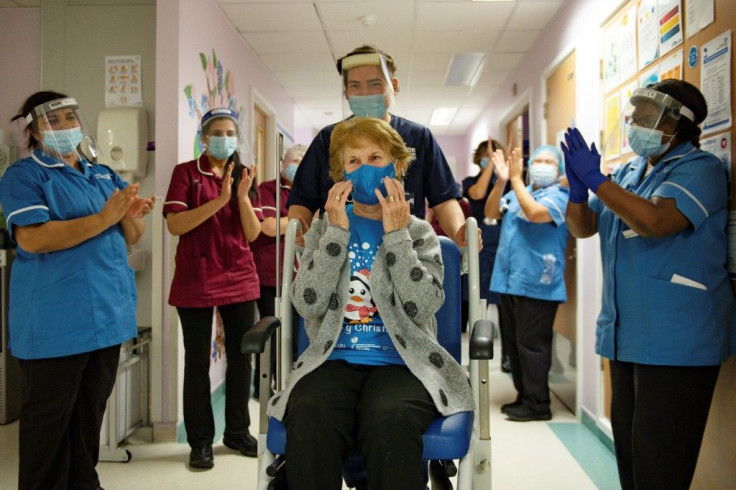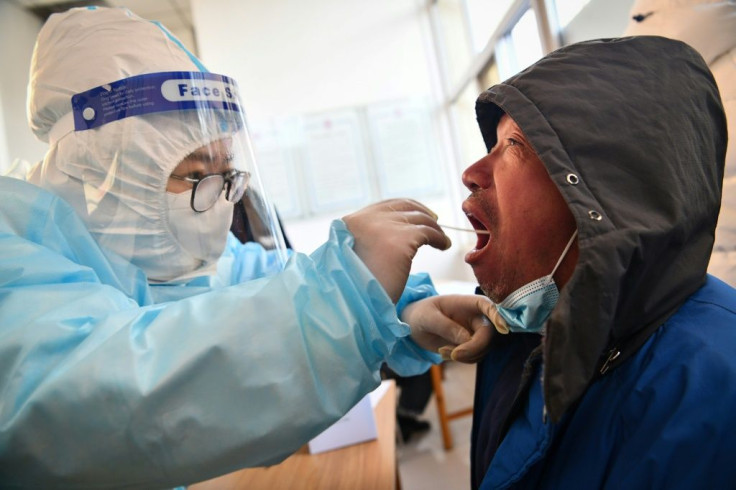Where The US Is One Year After First COVID Case Confirmed
KEY POINTS
- Scientists noted the mysterious illness in the U.S. on Jan. 21, 2020
- The severity of the situation was routinely discounted
- The global death toll is fast approaching the 2 million mark
Thursday marks one year since scientists confirmed the first case of COVID-19 in the United States. Described as a mysterious new virus at the time, the infection has led to a global pandemic that triggered an unprecedented breakthrough in vaccine development but left nearly 2 million people dead and pushed the global economy deep into recession.
“A male patient carrying the mysterious respiratory virus is currently at a medical center in Everett, Washington,” International Business Times noted on Jan. 21, 2020. “The virus, which was first detected in the central Chinese city of Wuhan, has killed six people and sickened 300 others in China.”
President Donald Trump routinely dismissed the severity of a viral strain that spread quickly through the United States, leaving store shelves emptied as Americans scrambled to stock up ahead of what would be a profound test of resolve and determination.
Trump, who invariably called the strain the China virus or the Wuhan virus, by February said he spoke with Chinese President Xi Jinping, who suggested Beijing was mounting a successful campaign against the outbreak.
“He will be successful, especially as the weather starts to warm & the virus hopefully becomes weaker, and then gone,” Trump said from his Twitter account in early February.
A month later, Americans started working from home and were told only to leave for essential activities.
The United States soon had some 80,000 reported cases of COVID-19, an acronym for coronavirus disease 2019, and more than 1,000 deaths attributed to complications from the viral infection. At the time, that was more than any other country.
“This could have been stopped by implementing testing and surveillance much earlier — for example, when the first imported cases were identified,” Angela Rasmussen, a virologist at Columbia University in New York, told The New York Times in late March.
That same week, congressional leaders passed the Coronavirus Aid, Relief and Economic Security Act, a $2.2 trillion economic stimulus bill that put $1,200 in the bank accounts of individual taxpayers, supplemented state unemployment insurance with $600 in weekly support and extended low-interest loans through the Payment Protection Program to keep businesses open during the pandemic.
With emergency orders to close businesses such as restaurants, gyms and other facilities where the virus could easily spread, unemployment levels by mid-March jumped by some 70,000 claims to 281,000, the largest single-week spike in nearly three years.
Health advisors had initially questioned whether surgical masks would protect against the spread of the virus, though by the time the CARES Act passed, many states considered mandatory mask regulations and members of the general public took to sanitizing their groceries.
With no real medical breakthrough, Trump in April made controversial remarks about how to combat the virus, pondering, among other things, an injection of disinfectants.
That same month, both the World Health Organization and the leading rich and developing nations in the G-20 issued a call to action on a vaccination campaign.
“Our Mission is not only accelerated development and availability of new COVID-19 tools – it is to accelerate equitable global access to safe, quality, effective, and affordable COVID-19 diagnostics, therapeutics and vaccines, and thus to ensure that in the fight,” a G-20 statement from April read.
Operation Warp Speed, a federal program overseeing vaccine development, was introduced in May. Trump, meanwhile, continued to downplay the severity of the situation and in July withdrew from the World Health Organization. A few weeks later and the United States passed the 5 million mark for new infections.
By September, the U.S. death toll passed 200,000, and analysts warned that number could double by 2021. A so-called super-spreader event marking the nomination of Amy Coney Barrett to replace late Supreme Court Justice Ruth Bader Ginsburg left several high-profile leaders with COVID-19. Trump himself was whisked way to the Walter Reed medical center after he came down with the ailment in early October.
It was the United Kingdom that moved first on the vaccination effort following a series of successful clinical trials from Moderna, Astra-Zeneca and Pfizer, which developed the first approved vaccine in coordination with German company BioNTech. On Dec. 8, 90-year-old Margaret Keenan became the first person in the world to get the first shot of the two-dose Pfizer/BioNTech serum.

"My advice to anyone offered the vaccine is to take it,” she said after the jab. “If I can have it at 90, then you can have it too.”
Vaccine distribution has been complicated since by logistical hurdles, a lack of federal oversight – particularly in the United States – and a reluctance to get shots of viral vaccines that rely for the first time on genetics to trigger an immune response.
By the start of the new year, however, Dr. Anthony Fauci, the top infectious disease expert in the country, said the inoculation campaign was overcoming its earlier hurdles.
“Any time you start a big program, there’s always glitches,” he said.
The pandemic rages on. School districts across the country are grappling with how to open safely, work-from-home has become the new normal and, once an anomaly, face masks have become something of a fashion statement.
During the first full week of January, the United States still led the world with deaths attributed to COVID-19 at more than 360,000. Johns Hopkins University put the estimated global death toll at 1.9 million.

© Copyright IBTimes 2024. All rights reserved.





















